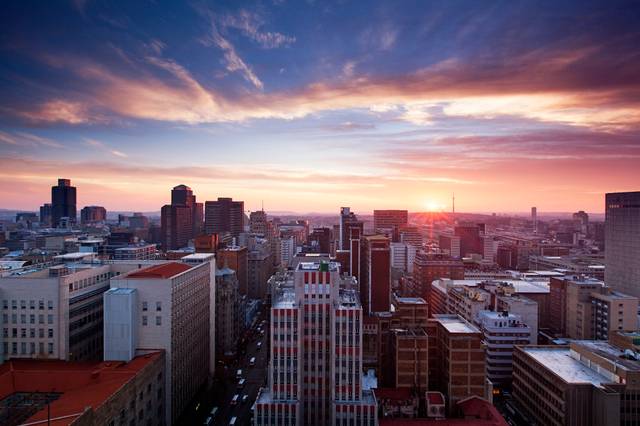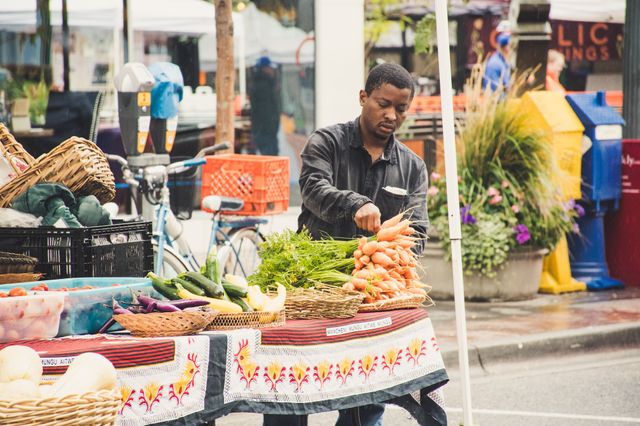
Alumni on the Move
The Great Urbanisation Debate
Africa has the fastest rate of urbanisation in the world, but do the benefits outweigh the risks? Sidney Muhangi (Uganda & Monash University, 2016) argues that urbanisation could be catastrophic, while Ajibola Adigun (Nigeria & UKZN, 2016) suggests that the millions of Africans moving to cities are onto something.
Sidney’s view:
It feels good to visit a new city. If you are a tourist, you will be guided to see the most upmarket places, not the slums, and you may develop the impression that city life is sweet. Movies and popular culture portray city life as a heaven of limitless opportunities. This is a delusion luring our ambitious young people to flock to the cities in pursuit of their dream lives.
The 2018 United Nations Population Fund (UNFPA) report indicated that 68% of the world’s population will live in cities by 2050. We assume that technology will solve all our urban problems, and remain confident that living in cities will make life more prosperous and enjoyable.
Well-managed urban development offers the benefits of economic and social development. However, the prospects of achieving these benefits depend on how efficiently cities are governed and controlled, and many cities grow unchecked. Rural development is a better option than the negative changes that urbanisation can bring to our social behaviour, health and living standards, and its impact on the environment.
The first risk is that rural-urban migration leads to rapidly growing populations. Large populations put increased pressure on the available services and housing options, which become insufficient. The result is the development of informal settlements and, in cities where there are not enough jobs, widespread poverty. According to the 2019 Mo Ibrahim Forum Report, almost half of Africa’s urban population lives in slums and informal settlements. Slum development is also associated with unsanitary conditions due to poor waste disposal and sewerage management infrastructure that contaminates water. This puts many at risk of catching waterborne diseases such as cholera and dysentery. Many people who migrated for the prospect of a better life struggle to survive in these marginal conditions.
Without jobs, adequate social services or safety nets, slums become contexts in which organised criminal gangs trading in drugs, robbery and sexual violence can flourish. For example, Cape Town, Nelson Mandela Bay and Durban ranked among the 50 most dangerous cities in the world, with murder rates of 66.36, 39.2 and 38.5 respectively per 100,000 inhabitants, according to a 2019 report by the Mexican Council for Public Security and Criminal Justice.
Furthermore, urbanisation in Africa has affected diets and food systems, aggravating the wider problem of malnutrition (micronutrient deficiency and over-nutrition). There is evidence that obesity and other non-communicable diseases are on the rise among urban populations because they consume mainly processed and kilojoule-dense fast foods in conjunction with low body activity. With more urbanisation, this situation will worsen, as the urban poor cannot afford to buy a variety of foods. Finally, urbanisation contributes to the global challenge of climate change. Poorly planned urban expansion exacerbates the risk of environmental degradation through the loss of urban tree cover. As populations increase, so do the level of industrialisation and the demand for fuel and materials for construction. Meanwhile, concentrated energy use and automotive exhausts pollute the air. The 2018 World Health Organisation report on air quality cited Dakar and Johannesburg as Africa’s most polluted cities. Findings by the US American Lung Association indicate that breathing air polluted by exhausts, coalfired plants and industry can cause lung cancer, heart disease and chronic respiratory complications such as asthma. Imagine how much damage will be inflicted on humanity fifty years from today!
Stopping the trend of urban development may be difficult, but checking its growth by developing rural communities to improve the quality of life of people in those areas will help reduce the influx into cities. Given the risks at hand, would I be for urbanisation? No thanks!

Ajibola’s View:
Cities are the stuff that dreams are made of, with their concrete jungles and dark alleys. In Africa, cities are also where dreams can either fly, or go to die. When Henry David Thoreau left civilisation to live at Walden Woods, he lent credence to the nostalgia of nature-lovers for the tranquility in the villages of their fathers. However, those who are nostalgic for the rural past have short and defective memories.
Most African cities were historically designed for very few people to live in – the exclusive preserve of elites. Today they are bursting at the edges with people. Kinshasa, Congo is second only to Lagos, Nigeria in its rate of urbanisation. It was designed for 60,000 people; today it contains almost 20 million people. Lagos is regarded as one of the most stressful cities in the world to live in, yet it attracts an estimated 85 people per hour on average, according to the World Economic Forum. Although Africa is the least urbanised continent, it has the fastest rate of urbanisation. This has not been driven by industrialisation, nor accompanied by the requisite infrastructural investment. Urbanisation in African cities has therefore mainly amounted to an expansion of city slums. Aside from areas which are the preserve of elites, African cities have largely failed to meet the challenges of rapid urbanisation. Yet cities are exactly where Africa’s promise lies.
Cities are the centres of commerce and culture. They are also the gateway to possibilities across the seas. Whatever is in short supply in African cities is usually completely absent in the towns and villages. Cities continually hold promise, and even when migrants are disappointed, they keep the faith. Crime and corruption thrive in these contradictions where plenty and lack, order and chaos, exist side by side. Although the cost of living in cities is greater because of the higher cost of rent and food, the standard of living is better. Due to thriving commerce, cities can offer more possibilities than agrarian economies, or: man does not live by bread alone.
In a bid to circumvent the failures of spatial planning to accommodate new arrivals, African governments have resorted to building new cities from scratch. As we can see from the abandoned Ivorian capital city of Yamoussoukro, planning a city alone does not a city make. If you build it, they may not come. Or you may go broke while at it. Even worse, your new city may not solve the problem at all. Egypt’s proposed smart city has run into a snafu, like Eko Atlantic City, the city built on land reclaimed from the Atlantic Ocean in Lagos, and the city being built for those who have made it in life in Accra, Hope City. These new forms of spatial apartheid will do neither those in their gated communities nor those left behind any good. By their already restrictive design ethos, they may have lost what makes a city smart: accessibility to all. These new cities will need to be reimagined as places where everyone can belong.
Let toddlers and retirees roam the towns and villages where their sense of wonder can be one with nature. For an African continent teeming with youth, cities hold the promises of tomorrow.









